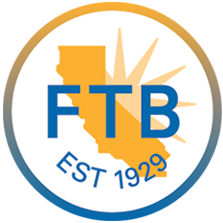
An employee benefit plan audit is a crucial step in ensuring compliance with regulatory requirements and safeguarding the integrity of your company’s benefit plans. However, audits often uncover significant issues that can lead to penalties, delays, and reputational damage if not properly addressed. Understanding the most common findings and how to mitigate them can help you prepare and avoid costly mistakes.
How To Address Employee Benefit Plan Audit Findings
While employe benefit plans are critical components of any business’ relationship with its employees, they are also complex. For this reason, The Ray Group’s Audit & Assurance team has identified some common challenges business face in managing these plans.
Below are the top 6 employee benefit plan audit findings and how to address them effectively.
1 Incomplete or Inaccurate Participant Data
Auditors frequently encounter discrepancies in participant data. For example, incorrect dates of hire, termination, or birth, as well as inaccurate compensation figures used to calculate contributions.
How to Address: Implement standardized procedures for data entry and regular data validation. You should also perform annual internal reviews of participant data, and train HR and payroll staff on the importance of accurate recordkeeping.
2 Late Remittance of Employee Contributions
The Department of Labor requires that employee contributions be deposited into the plan as soon as administratively feasible. Delays, even of a few days, can be considered prohibited transactions.
How to Address: Set up automated payroll and remittance systems. Compare remittance schedules with payroll cycles regularly and establish a documented remittance policy and timeline to ensure consistency.
3 Improper Eligibility Determinations
Errors in determining who is eligible to participate in the plan or when they become eligible can result in missed contributions and compliance issues.
How to Address: Review and update plan documents to ensure clarity on eligibility rules. Cross-train staff on eligibility criteria, and conduct periodic audits of new hires and plan enrollments.
4 Failure to Follow Plan Document Terms
Many findings arise from plans not operating in accordance with their official plan documents. Whether it’s incorrect matching contributions or improperly calculated vesting.
How to Address: Ensure HR, payroll, and benefits administrators are familiar with the plan document. Conduct periodic operational compliance reviews and update internal procedures to align precisely with the plan’s terms.
5 Inadequate Documentation or Record Retention
Missing records such as enrollment forms, loan requests, or distribution authorizations can raise red flags during an audit. As a result, the auditor’s ability to verify transactions is hindered.
How to Address: Maintain a secure and organized document management system. Set and enforce record retention policies in accordance with ERISA guidelines. It’s also recommended to digitize and back up critical documents regularly.
6 Errors in Plan Financial Reporting
Common mistakes include incorrect financial statement presentation, misclassification of assets, or misstatements in Form 5500 reporting.
How to Address: Reconcile plan records with the general ledger regularly, and conduct periodic internal audits to catch errors early.
Get in Touch
An employee benefit plan audit is more than a regulatory formality. It’s also about contributing positively to your employees’ financial future. By addressing these common audit findings with our recommended strategies, you can enhance the effectiveness of your employee benefit plans. Thus, ensuring they meet regulatory standards and serve your employees’ best interests.
The Ray Group can help your organization implement the strategies discussed in this article. Contact us to learn more about our Employee Benefit Plan Audit Services.
You may also enjoy reading: Comprehensive Tax Services Provided by The Ray Group







